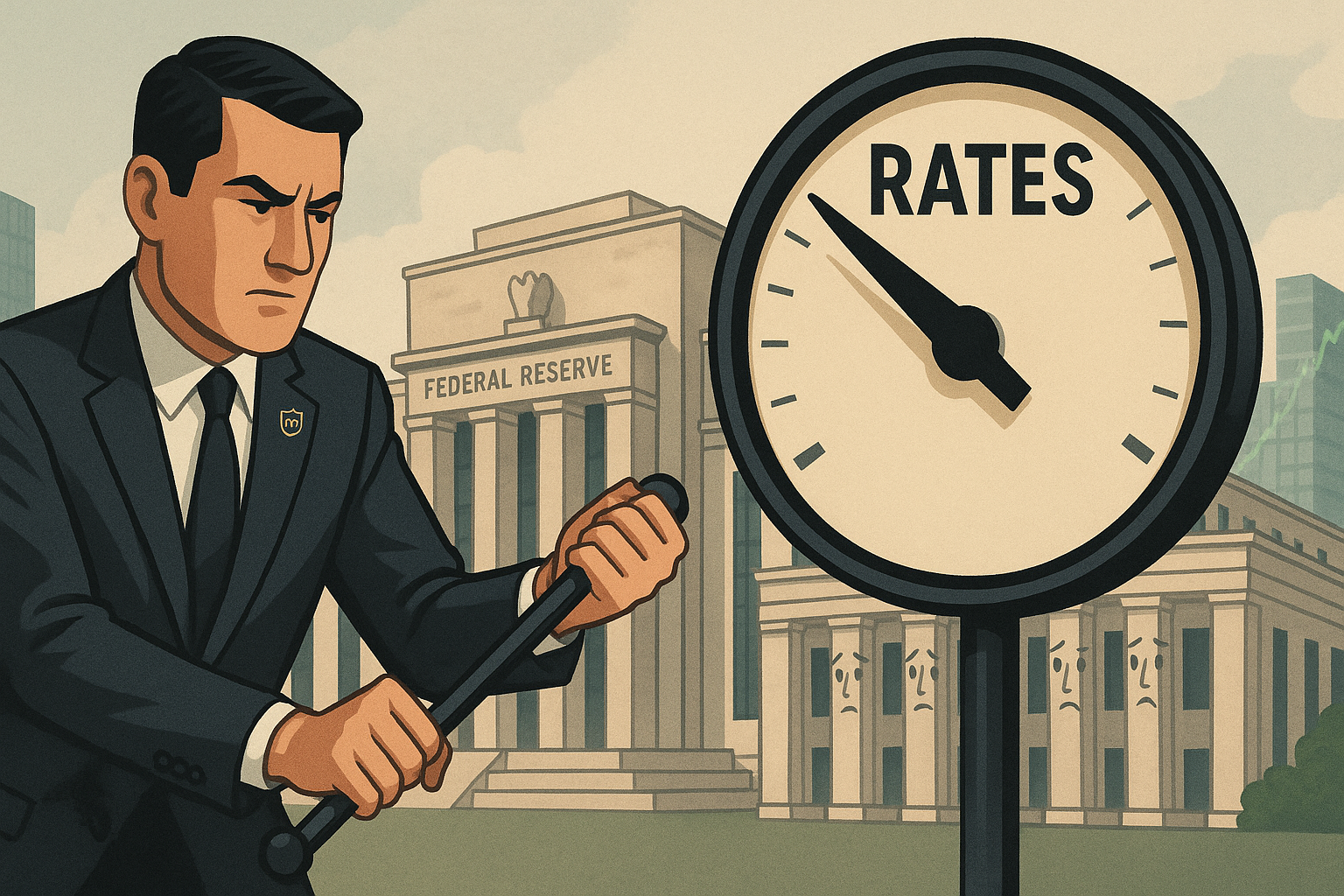Scott Bessent, Trump's pick for Treasury Secretary, just cranked up the volume on the rate-cut conversation to eleven. In a move that raised eyebrows across the financial world, Bessent publicly called for the Fed to slash rates by at least 150 basis points—apparently forgetting that whole "central bank independence" thing we supposedly care about.
"I think we could go into a series of rate cuts here, starting with a 50 basis point rate cut in September," Bessent declared during a Wednesday TV appearance. You could almost hear Jerome Powell's stomach acid churning from across town.
Look, there's something almost comically predictable about a Wall Street guy stepping into Washington and immediately advocating for policies that would send markets soaring. Bessent went on to claim that "any model" suggests rates should be "150, 175 basis points lower"—a convenient assertion that somehow every economic theory aligns perfectly with what would juice the stock market. Funny how that works.
The Convenient Timing of Economic Enlightenment
I've covered Fed policy for years, and there's always something theatrical about these sudden revelations. Bessent suggested that Fed officials might have cut rates sooner if only they'd known about those downward revisions to payroll data. It's economic Monday-morning quarterbacking at its finest.
The revision showing 258,000 fewer jobs in May and June is significant—no argument there. But c'mon. The Fed employs small armies of economists with access to real-time data from across the economy. Are we really supposed to believe they were just waiting for this one specific report before making their move?
(This reminds me of a Treasury official I interviewed back in 2019 who insisted, off the record, that "half of monetary policy is just educated guesswork dressed up in fancy econometrics." Maybe more honest than we'd like to admit.)
When "Models" Become Magic Words
"Any model would tell you..." might be the most convenient phrase in the economic policy handbook. I've watched policymakers invoke mysterious models to support whatever they already wanted to do for years.
Economic models are like political polls—they're shockingly good at confirming whatever bias you bring to them. Tweak an assumption here, adjust a variable there, and voilà! The model now supports your preferred outcome.
The Taylor Rule might indeed suggest lower rates given current conditions. But other frameworks incorporating financial stability concerns or potential inflationary rebounds point elsewhere. Remember when sophisticated risk models told everyone that mortgage-backed securities were rock-solid investments in 2007? How'd that work out?
The Market's Rate-Cut Romance Has Turned Obsessive
Have you checked the CME FedWatch tool lately? It shows a 99.9% chance of at least a 25 basis point cut in September. Not 90%. Not 95%. But 99.9%—the kind of certainty usually reserved for death, taxes, and disappointment.
The relationship between markets and central banks has grown increasingly dysfunctional over the past fifteen years. Every economic hiccup, every market wobble transforms immediately into justification for more accommodation. It's as if we've collectively forgotten that interest rates are supposed to move in both directions.
After spending time with several fund managers last month, I can tell you the dependency is real. "We're all just Fed-watchers now," one veteran portfolio manager told me with a laugh that didn't quite reach his eyes. "Fundamentals matter, sure, but not as much as Powell's tone of voice at the next press conference."
The Strange Case of Policy Asymmetry
There's something fascinating—and more than a little frustrating—about how Treasury nominees and market participants approach interest rates. When inflation was raging and the Fed was hiking rates, everyone counseled restraint. "Don't overreact!" "Be patient!" "Look through the temporary factors!"
Now that inflation has cooled somewhat? Those same voices demand immediate, aggressive action in the opposite direction.
This reflects our terrible human ability to weigh present discomfort against future risks. Higher borrowing costs hurt now. The potential damage from premature easing? That's somebody else's problem, somewhere down the road.
The Independence Charade
The fiction of central bank independence persists despite evidence to the contrary. Bessent's comments represent a particularly clumsy version of the pressure that always exists.
The Fed will, of course, insist its decisions remain data-dependent and free from political influence. Treasury officials will maintain they're merely offering their economic assessment. And everyone pretends not to notice the awkward reality.
I spoke with a former Fed official last year who put it bluntly: "Independence isn't binary—it exists on a spectrum. And that spectrum shifts depending on who's in power and what's at stake." Not exactly the reassuring firewall between politics and monetary policy we're promised in economics textbooks.
The bigger question isn't whether the Fed will cut rates—that train has left the station—but whether they'll maintain enough discipline to avoid overcorrecting... again. Because if there's one consistent pattern in monetary policy history, it's the tendency to swerve from one extreme to another, always fighting yesterday's war while tomorrow's builds on the horizon.
Meanwhile, Wall Street will keep pricing in what they desperately want to happen. And Treasury nominees will keep offering "suggestions" that sound suspiciously like demands.
Some things never change. Though interest rates, eventually, must.




